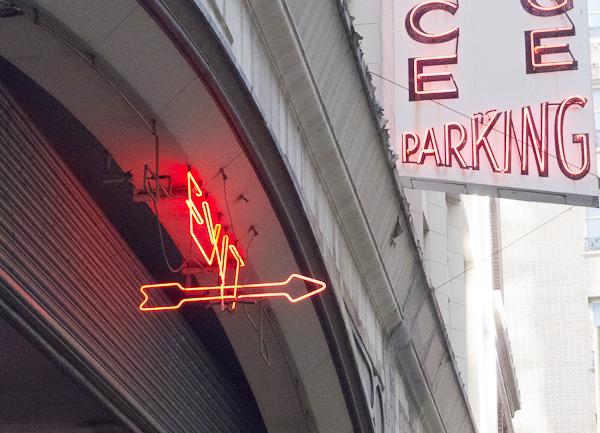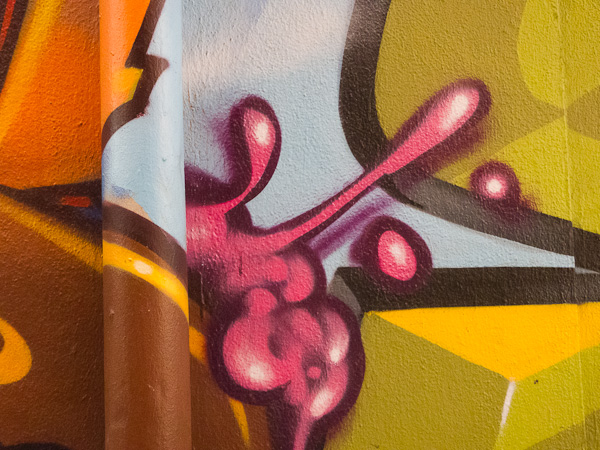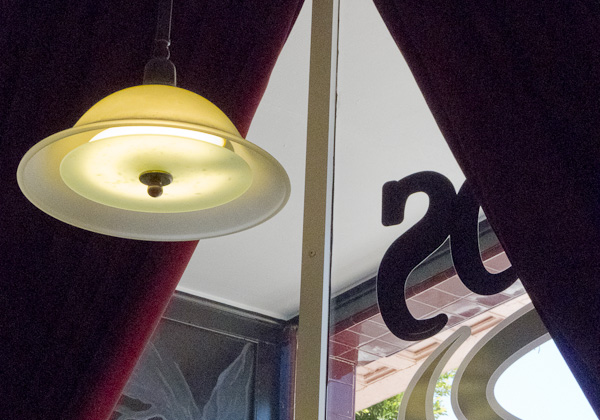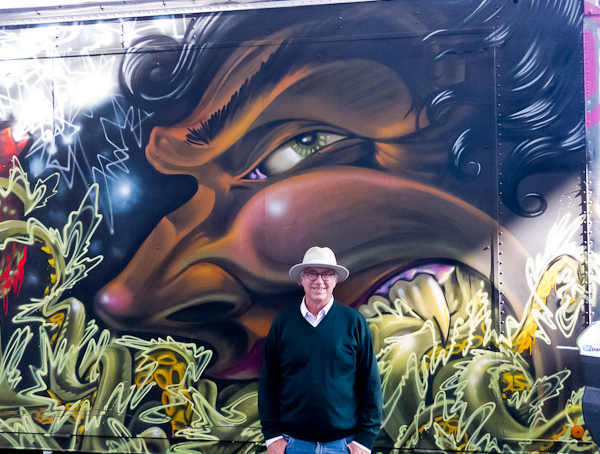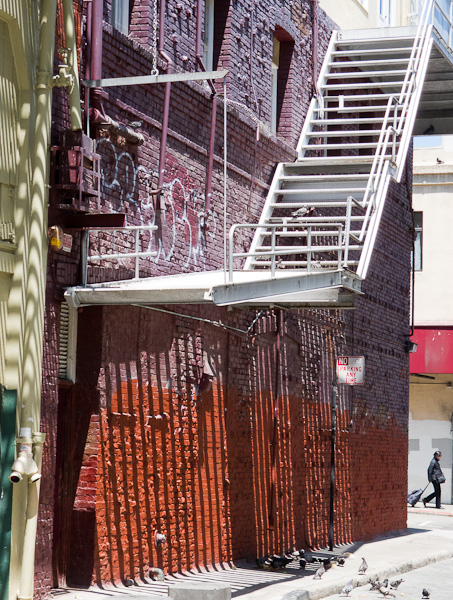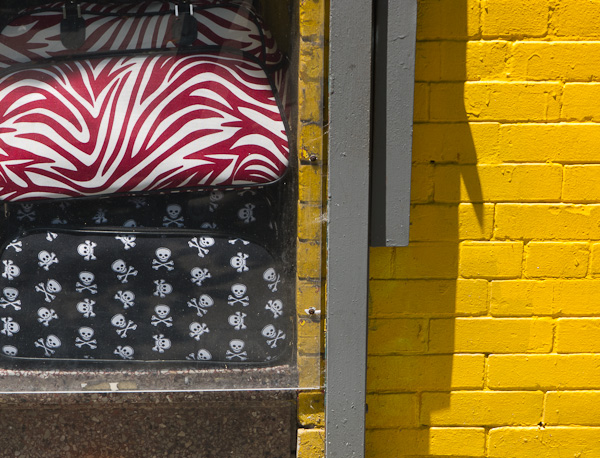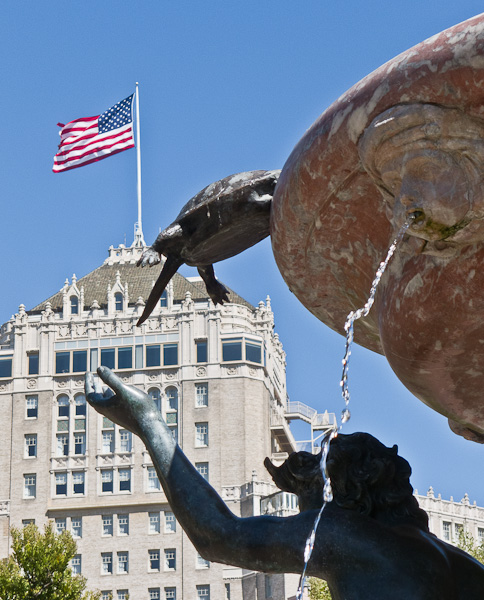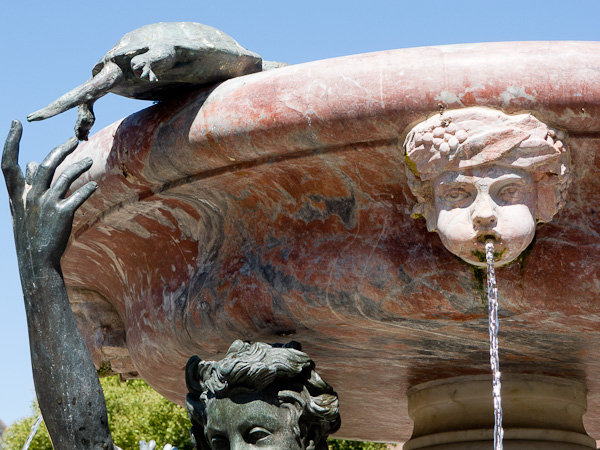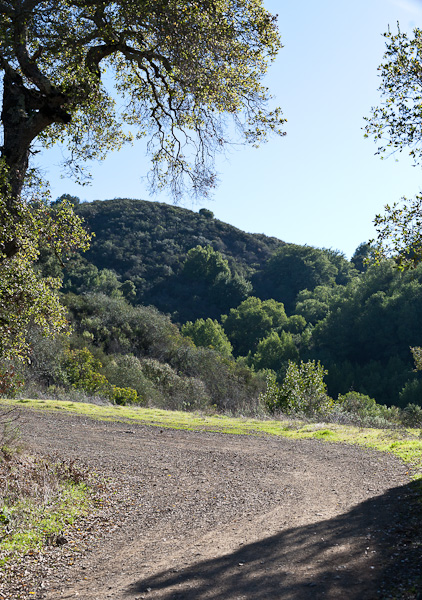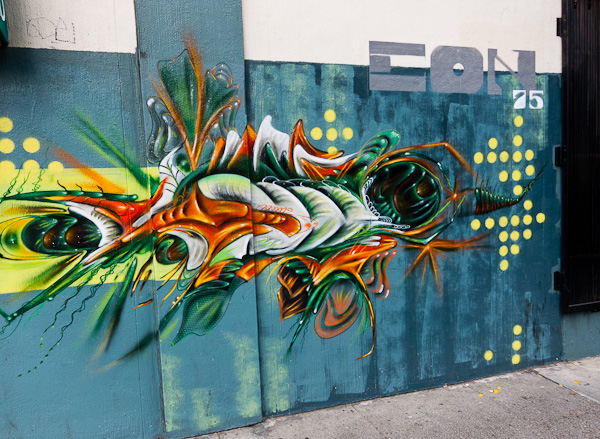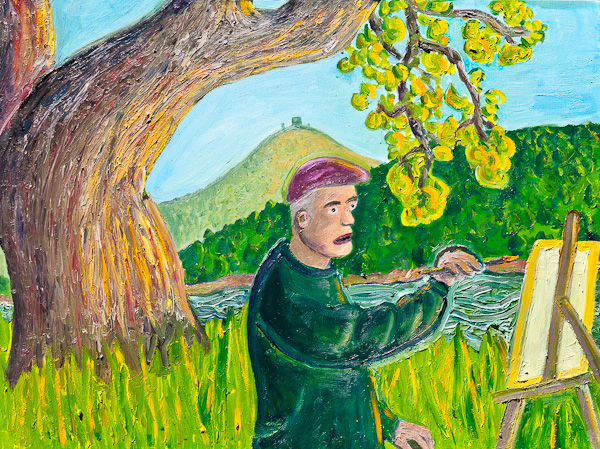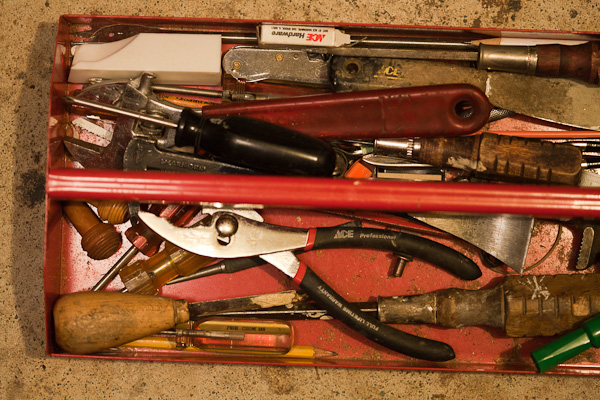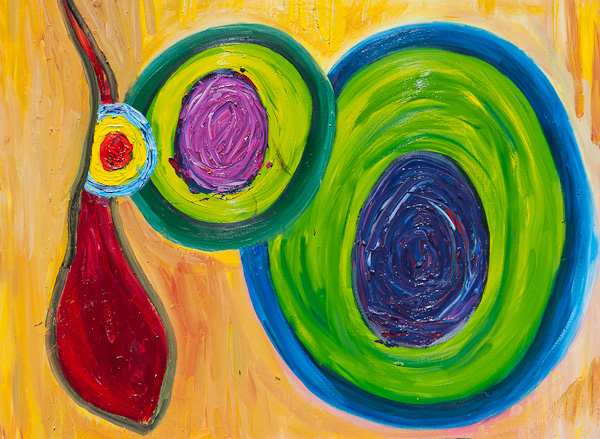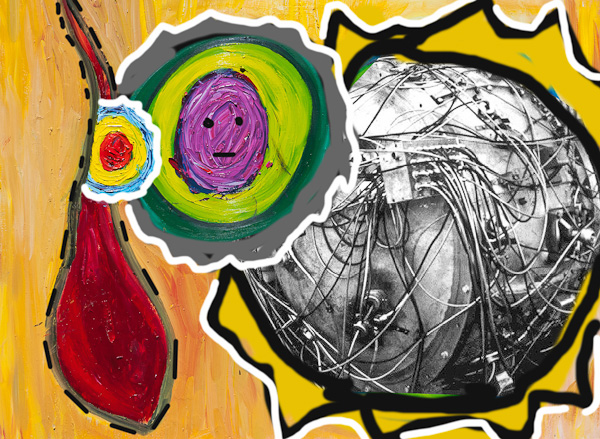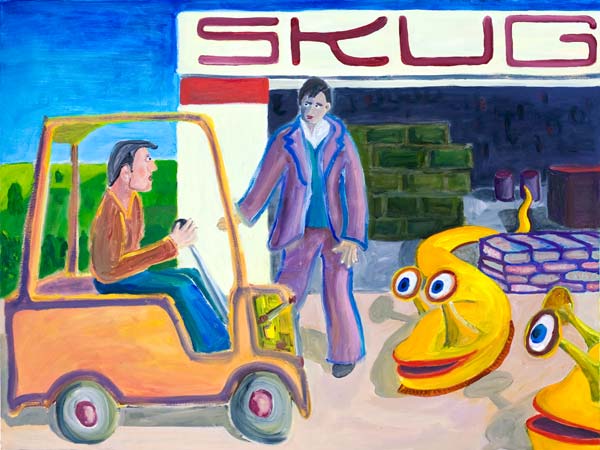My autobiography, Nested Scrolls, is out in a limited edition from PS Press in England. They’re selling hardbacks and a signed collector’s edition.
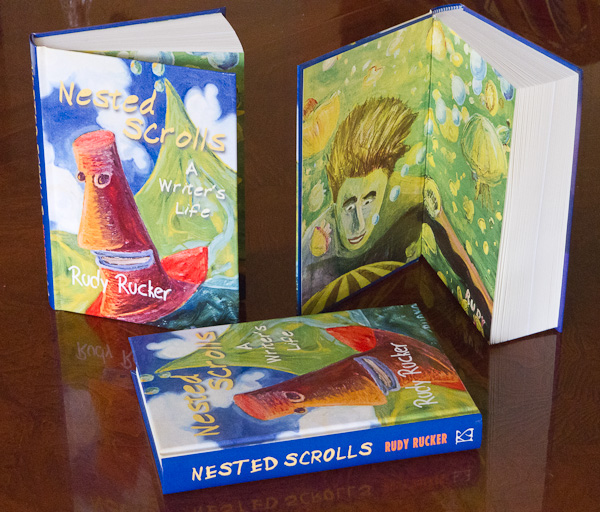
I just got my copies yesterday which was, synchronistically, the day I finished the first draft of the next book in the pipeline, Turing & Burroughs.
Note that PS used one of my paintings, “Surfin Tiki” for the cover, and my painting “Jellyfish Lake” for the endpapers. They put together a very nice looking book. The Tor edition will look more or less the same on the inside, although it will have a different cover and no colored endpapers.
Starting on December 6, 2011, Nested Scrolls will also be available in hardcover and ebook editions from Tor Books. I see it already listed byAmazon, Barnes&Noble, Borders, and the site for Independent Booksellers.
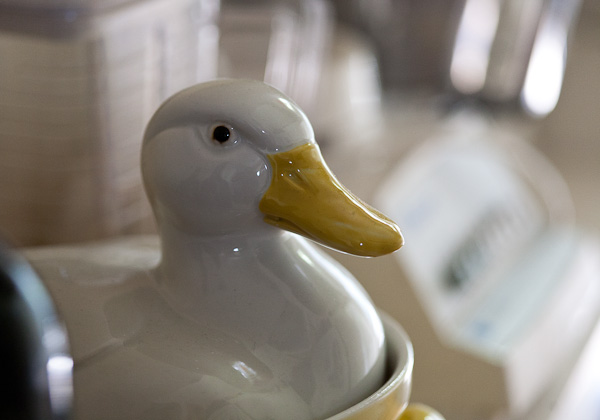
[By the way, we’re not so fond of Amazon in California as we used to be, now that they want to fund a ballot initiative to block our state from collecting sales tax from them…and now that they’ve stopped paying “finder’s fees” to the so-called associates (such as bloggers) in California who link to their site.]
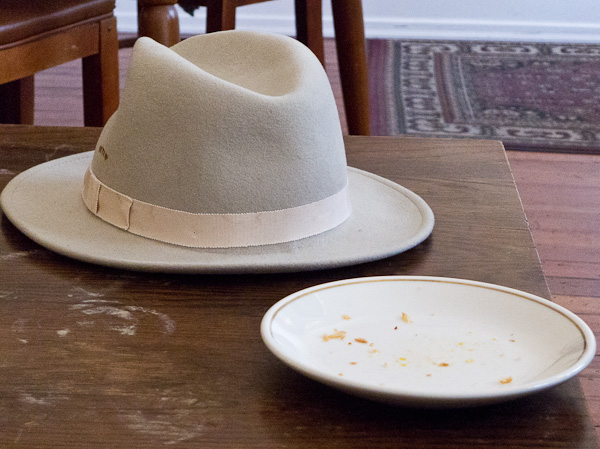
But never mind such mundane considerations. The mothership of Nested Scrolls is launched. Odd than anyone might ever have mistaken it for a hat!
To fill out today’s post, I’m printing some excerpts from my Notes for Nested Scrolls document. You can read this whole document for free online as a PDF, see the link off my Nested Scrolls page.
By the way, when I started writing these notes, I still wasn’t quite sure if I was working on an autobiographical memoir…or on a transreal novel.
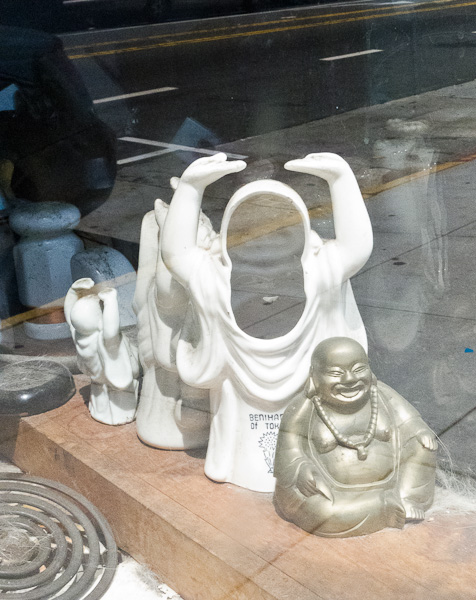
July 11, 2008.
Who would really want to read a memoir by me, after all? It’s not like I’ve gotten a lot of emails from people who have read the existing autobio note online.
There should be some riddle whose answer I’m seeking by writing the memoir—or the memoir-like novel. What is reality? What’s the point of my life? How can I be happy? What did I learn by writing thirty books? What’s the missing book that I need to write? How is it possible to write at all? Can I create a completely pure work of literary art? What has it been like to be alive? What was the point?
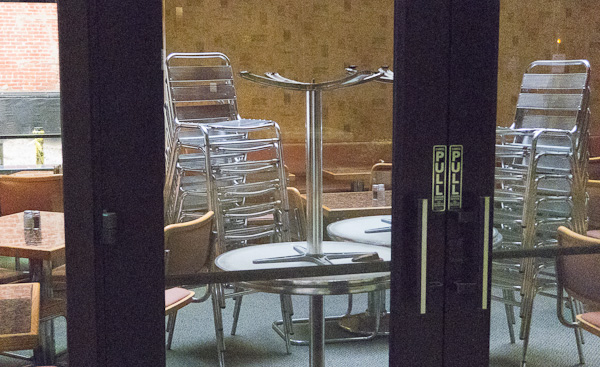
July 12, 2008.
Looking around Borders Books today, I was thinking about what kinds of memoirs get published. David Sedaris and Augusten Burroughs have a whole thing going with rueful tales of personal dysfunction. Back in the 1930s, Robert Benchley, James Thurber and Dorothy Parker were doing something similar.
Another angle is to present yourself as the Witness to History—for me, this might be the Silicon Valley thing or the cyberpunk thing, though people aren’t responding much to the Silicon Valley idea when I suggest it. It’s like people are sick of Silicon Valley. Maybe if I could clearly cast the memoir as evocations of a bygone era—which certainly it would be. In this context, I think of the Vanished Wild West.
The point of writing a memoir would be to entertain myself, and to gain a bit more self-knowledge. To have some fun. In certain lights, doing a memoir seems easier than grinding away on another novel. But maybe not.
Mainly I want to write, and I don’t care all that much what it is that I’m writing.
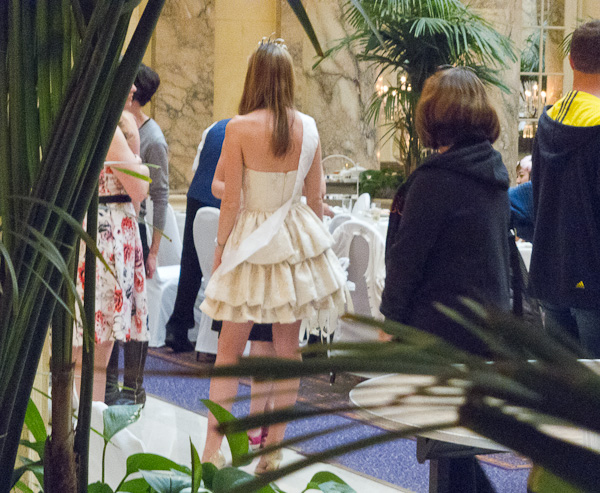
July 17-26, 2008.
Back to the current obsession—why bother writing an autobio? What would I get out of it? Self-knowledge. Bragging pleasure. Self-guidance. Publicity.
It’s mattering less and less to me if I actually do write a memoir. There’s such a powerful “why bother” haze surrounding any plan for a memoir.
It might really be more productive to write another novel. Or maybe just a couple of stories first. At the very least, I’m writing in this Notes document.
I’m writing almost at random in these notes. Which could be a good thing. I’ve heard it said that writers are at their best when they have no idea what they’re doing.
William Blake, The Marriage of Heaven and Hell,: “If the doors of perception were cleansed every thing would appear to man as it is, infinite. For man has closed himself up, till he sees all things thro’ narrow chinks of his cavern.”
I feel like this is getting nowhere. But you never know.
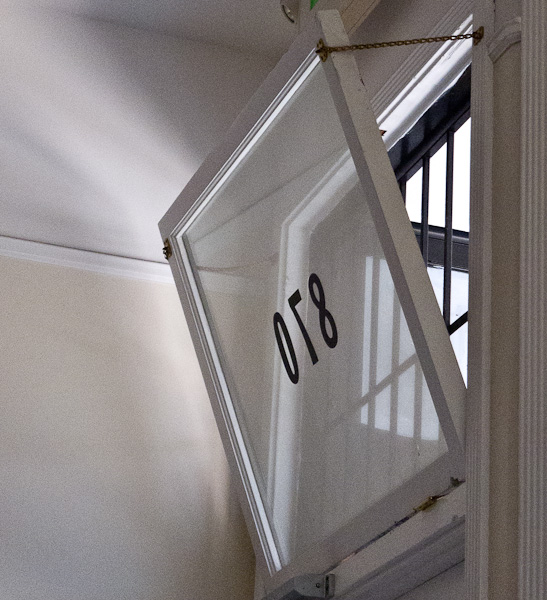
July 26, 2008.
Today’s title for the book is Nested Scrolls, a phrase I like because it describes the chaotic, self-organizing, artificially alive Belousov-Zhabotinsky simulations that I love. And “scroll” is good, as it refers to a document or even a sacred text, and if the scrolls are “nested” that’s fractal and self-referential and heavy.
I could even get literal with the title, and have the book in the form of a memoir that an aging man is trying to write, and he begins finding extra stuff in the document. Maybe he can somehow zoom in—it’s an electronic document—and he sees stuff that he doesn’t remember writing. And he goes into time-travel flashbacks. And maybe some characters from the past show up. Nested Scrolls.









